

Quantisation means those operations in generating mosaics that represent the colours of the original picture compared with the colours in the configuration as well as possible. Different approaches are available.

As the name implies this method matches each colour of the original picture naively on the next calculated colour of the configuration. The sRGB colour space is used here. In this colour matching errors are no longer considered.
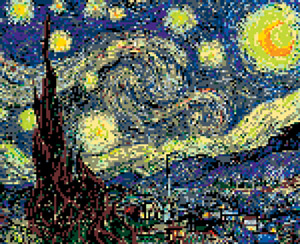
This method represents each colour of the original picture naively on the next calculated colour on the configuration, too. In this connexion however the CIELab colour space is used, that is very closely based on the colour sensation of the human eye. Therefore this method often generates clearly better mosaics than the above-mentioned method. Errors in this colour matching are no longer taken into account.
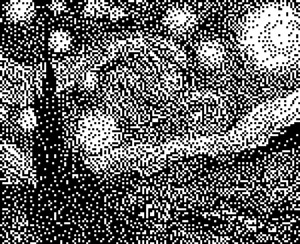
With a two coloured flaw distribution colours below a certain value of lightness and colours above that value are represented on two colours chosen by the user. The resulting error in calculation is distributed pro-rata on the next four pixels (according to Floyd-Steinberg). Thus contrasts in the newly generated mosaic are enforced to improve the picture quality. A total of three processes flow direction are available for this method:
By choosing the two colours freely the user can ecellently apply this method to artistic objects.
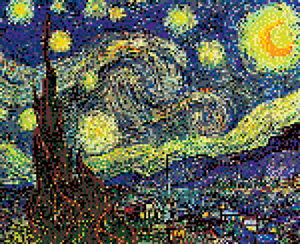
This method also includes a distribution of errors according to Floyd-Steinberg. But this method works in the complete CIELab colour space. The errors are also calculated and distributed spatially so that excellent mosaics are generated especially with colour photos as original pictures.
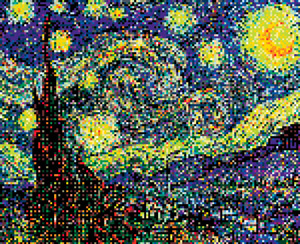
With this method 2x2 colour patterns of all combinations of two colours at a time are generated at the beginning. Then the mosaic is quantised with a now expicitly larger number of available colours. The larger number of colours effects a high quality, but the used patterns can sometimes be seen in the mosaic.
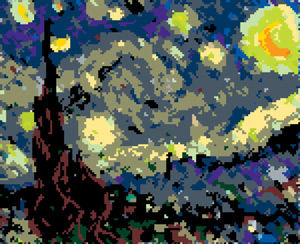
This method is based on the naive quantisation of the CIELab colour space. In addition single colour pixels are eliminated and recoloured with the predominant colour. Especially with comic-like original pictures the quality can be increased that way. With colour photos this method normally produces an artistic effect (wet brush).
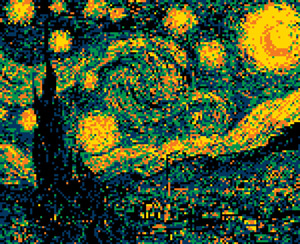
With n-level quantisation (slicing) the original picture is changed into a shade of grey at first. The user can choose between eight colours and represent them on the lightness axis of the picture by help of thresholds. Using the colours black, white and some shades of grey some excellent mosaics can be generated.
By choosing his colours freely the user can excellently apply this method to artistic objects.
Last modified on 2009/11/29 - Copyright 2006-2018 - Tobias Reichling, Adrian Schütz
XHTML 1.0 Validator, CSS Validator, optimal representation in Mozilla Firefox